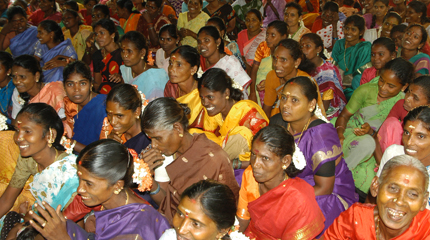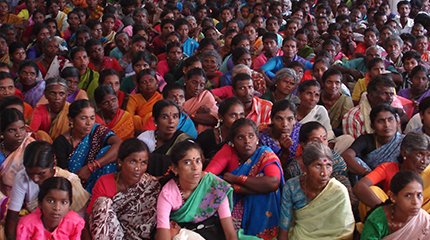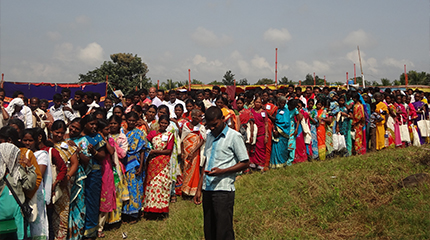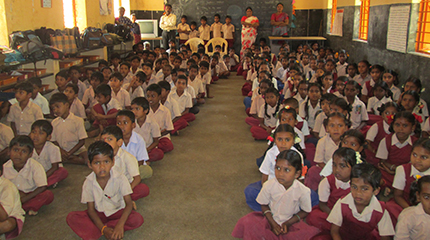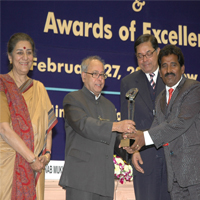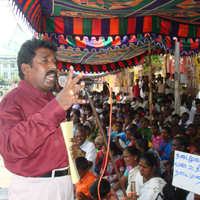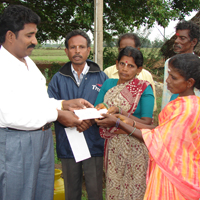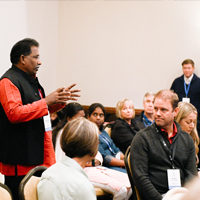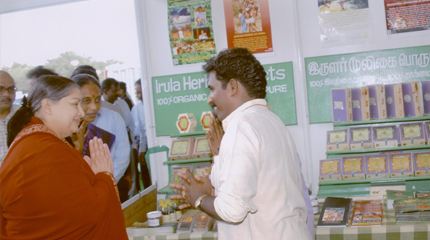
- 1. Organising awareness programs, workshops, meetings, and seminars for educating the public and other multiple stakeholders about the bonded labour system and its effects on the society.
- 2. Involving survivors to share their stories and their pain while they were in bonded labour system and creating public awareness.
- 3. Survey and identification on the issue of bonded labour system.
- 4. Involving vigilance committee in identification of bonded labour.
- 5. Organising legal training about the BLSAA 1976, SOP 2017, CSS 2016, 2022, NHRC 2021, to the appropriate district level officials.
- 6. Working with district administration for release of the bonded labourers based on the complaint and survey report.
- 7. Building team capacity through organised training for planning, review, evaluation and upgrading advocacy and communicating skills.
- 8. Teaching multi-stakeholders in identification, rescue and to eliminate the bonded labour system totally with systematic coordinated efforts.
- 9. Gathering data from government and preparing status report and dissemination to the authorities.
- 10. Organising programs with multiple stakeholders to create public concerns for effective enforcement of labour laws and social protection policies.
- 11. Efforts for effective implementation of laws such as the Bonded Labour System (Abolition) Act 1976, Prevention of Atrocities on SC/ST Act 1989, Indian Penal Code (Sec.370-374) of 1860, Juvenile Justice Act (Care & Protection of Children) 2000, Child Labour (Prohibition & Regulation) Act 1986, Minimum Wages Act 1948, Inter-State Migrant Workmen (Regulation of Employment & Conditions of Services) Act 1979, the Code of Criminal Procedures 1973 (Sec.97 & 357), Payment of Wages Act 1936, National Rural Employment Guarantee Act 2005, and policies with legal system including successful trail in the court.
- 12. Consolidation of guiding manual (along with required translations) by consisting of ILO conventions, UNO declarations, Constitutional provisions, BLSA Act, SC/ST POA Act, CLPR Act, ISMW Act, UNSS Act, Minimum Wages Act, SOP, CSS, Supreme Court directions with necessary forms and preparing as user friendly document and circulating to all.
- 13. Rescue and release of bonded labourers within 24-hours with the coordination of DM/SDM.
- 14. Organise orientation training camps to the Public Prosecutors and members of the District Legal Service Authorities on the importance of public justice system in view with abolishing bonded labour system.
- 15. Developing public justice system (executives, judiciary, media and public) to develop victim centric approach for justice and equality.
- 16. Revive traditional livelihoods skills, indigenous medicinal knowledge, tribal cultural programs for awareness and abolishing the bonded labour system and promoting unity in empowerment.
- 17. Developing facts and collection of data on the prevalence of the issue. Preparing status document and submitting to the policy makers to bring out appropriate policies to eliminate bonded labour and labour trafficking.
- 18. Creating database on the crime, facts on action taken and replicating models for learning and scaling up.
- 19. Involving multiple stakeholders to analyse the issues and solutions.
- 20. Organise meetings of the victims and their community members to analyse their skills, capacities, and opportunities.
- 21. Create linkages with all welfare departments and get schemes to access livelihoods, reduce poverty, vulnerability, scarcity, and promote job guarantee, food security, social security and achieve dignity of the victims.
- 22. Protecting rights of the rescued bonded labourers through psycho-social counselling, confidence building, basic needs, community interaction and membership in Self-Help Groups, Released Bonded Labour Associations and PWCs.
- 23. Formation of Community Watch Groups (CWG), for protecting the vulnerable people from violence and monitoring moneylenders.
- 24. Organising meeting for the survivors, with their family and with village members to promote healthy environment, provide psychological support, by having food security, nutritional care, wellbeing, resolving domestic violence and building healthy relationship.
- 25. Organising meetings / camps at panchayat level with the participation of government and non-government representatives to utilise laws to end bonded labour and child labour.
- 26. Formation and strengthening of RBLAs/PWCs/SHGs to do constant monitoring and action to eliminate bonded labour.
- 27. To build capacity of the people, victims, and vulnerable communities to support for judicial action and use DLSAs.
- 28. Developing legal support action for the protection of the freed bonded labourers and victims of the human trafficking through coordination with public prosecutors.
- 29. Mobilizing grassroots communities, building capacities, and addressing root-causes to eliminate bonded labour.
- 30. Selection of 246 cadres from 82 districts and training them as district leaders to do regular monitoring, communicating, and undertaking activities to eliminate child labour, bonded labour with FSD team members.
- 31. Promoting welfare of every freed bonded labourer / victim of human trafficking by securing & protecting the economic interests of person through NREGA, PRI, PDS, ITDA, SERP, NRLM, DLSA, NTFP, NRLM, NHRC, etc
- 32. Introduction of best income generation activities through alternative livelihoods with the leadership of freed bonded labourers.
- 33. Promoting model income generation programs for example, minor-forest collection, tribal tourism, food processing units, people’s forums for self-help, fishing unit, herbal collection, tribal diary, herbal centre and handy-crafts units and such activities.
- 34. Rebuilding the society in view with preamble of the Constitution and owning the progress by increasing responsibility of citizens “by the people – for the people – of the people”.
- 35. Constant monitoring by the district administration and better coordination with all departments.
- 36. Activating vigilance committee and its functions as per the legal provisions – regular inspection, survey, collection of data, rehabilitation, and recommendations to the district magistrate for creating nil-bonded labour system..
